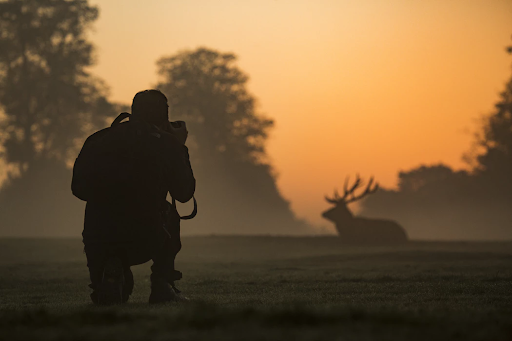Capturing the wonders of wildlife can pose a different challenge as it takes a lot of commitment. More than learning about camera skills, learning about the animals will be a need too.
Before engaging, make sure you have all the necessary gear you need to capture wildlife at its best. Before you travel and capture photos of nature, double check that you have the right cameras, lenses, camera batteries, and other accessories in your backpack. With that, here are 10 tips to help you capture wildlife through your photos.
Use Long Lenses
Most wild animals prefer to hide and keep distances from humans. Having a powerful lens is a must to capture them in your photos. Photographers do recommend to have a zoom lens with at least 200mm if you use a DSLR or mirrorless cameras. For a point and shoot camera, choose those with an optical zoom of at least 60x.
If possible, choose a lens with Optical Stabilization (OS) to minimize shaking due to extreme magnification. However, this comes a bit expensive. A good alternative could be using a tripod and mount your camera. The camera tripod is a staple for wildlife and travel photographers, by the way.
Keep Your Distance

Aside from animals getting scared when you get too close, keeping away from wild animals will keep you safe from attacks. In most cases, the best way to shoot carnivorous animals is from a distance. Most photographers shoot with their lenses from a vehicle.
There are animals who are very sensitive to noise, that even the sound from your shutter can scare them away. To prevent noise from your shutter, opt for a camera with a quiet shutter, or wrap fabric around your camera to help muffle the noise.
Know Your Camera Settings
Exploring wildlife through photography also makes you explore and maximize your camera settings. Adjusting them manually, depending on the conditions, will make your photos better.
When you are geared with a long lens and fast-moving animals, capturing a sharp photo can be difficult. Aside from the blur from the animal’s motion, the long lens will cause an intensified shaking of the camera. As a fix, make sure you shoot with fast shutter speeds. A shutter speed of 1/1000th of a second will work on most animal encounters. For capturing birds at flight, a shutter speed of 1/4000 will be better.
In addition to using a fast camera shutter, using the burst mode of your camera to capture your action photos. Most cameras in burst mode shoot 3 to 20 images per second. Capturing with that speed can help you nail the perfect shot.
On the other hand, using macro lenses is great for shooting photos for small insects and animals. These lenses force you to get close to the subject, so be careful not to make sudden movements.
Be Patient

Patience, as much as in other areas of photography, is a must. Dealing with wild and untamed animals means that there is no control over your subject. One of the things that can help you capture animals is to be patient. Observe the animals for their behavioral pattern. Always be ready as the events can be unpredictable in nature. To some photographers, waiting can take long, reaching 9 to 10 hours a day, just to capture that perfect shot.
Avoid Shooting Midday
Most animals are more active during dawn and dusk because the temperature tends to be cooler. These are also the best times to capture as they are more visible and out for a hunt. Moreover, make sure you research more details for particular animals you want to shoot in the area.
Don’t Use Flash
Professional wildlife photographers avoid using flash. This will not help you at all as it can scare the animals away. Aside from that, your camera flash produces harsh lighting to your subject. Probably, since you will be shooting mostly from a distance, the light would not reach the subject. It is better to depend on the lights during the Golden Hours.
Make Your Subjects Stand Out

In wildlife photography, the main focus is the animals. The goal is to highlight your subjects and make them stand out. Photos with a cluttered background can cause the subject to get lost in the image.
There are many animals in the wild that can be your subject. You may opt for the prominent animals, such as the “Big 5” of Africa’s greatest animals: Lion, Leopard, Elephant, Rhino, and Buffalo.
However, you can explore further and discover something new from the “lesser” animals. For instance, you can easily take the photo of a lion which is, most of the time, stationary and asleep. But, on the other hand, you can take photos of other wildlife which can be more active and more interesting.
Inject Emotion

Getting close to animals is a great way to help your audience connect to them. You can get close by using a long lens, or by getting close yourself. When you get close, however, try to capture them at their eye level. This simple change in angle brings your viewer into the scene and confronts them with your subject’s perspective.
Protect Yourself and Your Gear
Finally, make sure you and your equipment are protected from harsh elements in the wilderness. Keep your clothing appropriate to the conditions in the area. You can use a hat, a raincoat, and a jacket to protect yourself from the sun, strong rains, or very cold weather. You can also use accessories such as mosquito nets if needed.
For your gear, waterproofing them can be essential during your travel. Waterproof backpacks can store your equipment safely, aside from organizing them using the backpack. A rain cover can also protect your camera and lens while you are shooting. It can protect from rain, as well as dust, dirt, and other particles outdoors.
Practice
To be a wildlife photographer is to constantly have practice. That does not mean, however, to stay or migrate to countries near wildlife areas. You can still practice shooting wildlife even at home.
Having a feeder in your backyard can help you capture some birds. Having a garden at home is also an opportunity. You can make the most with macro photography with the miniature ecosystem living in your garden. Your local parks are also a habitat for some animals. In these locations, you can never run out of subjects to shoot with your camera.
Conclusion
We all know that watching nature can be a way to unwind. Aside from following these amazing tips, when taking your wildlife photos, relax and enjoy the moments with nature. When you enjoy by merely watching wildlife, that waiting period can be as satisfying as taking the perfect shot.






